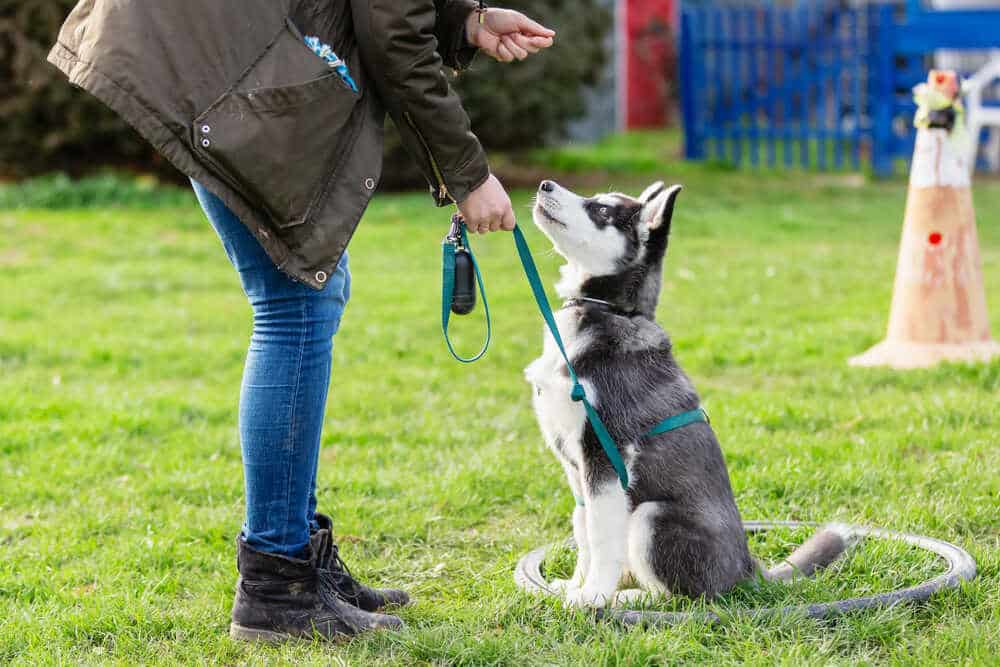A leash and collar are essential accessories for any domestic dog. Even those pets that rarely leave their home yard should be able to stay on a harness.
Before leash training your puppy, it is important to learn the advice of experienced owners. Dog handlers ensure that the success of the training process depends on the character and age of the dog. The patience of the owner himself will also be important. So, let’s learn more about the purpose of leash training.
Absolutely! Here’s a breakdown of leash training benefits and steps, emphasizing the importance of positive reinforcement and building a strong bond:
Why Leash Training Matters
- Safety First: A leash-trained dog is less likely to run into traffic, bolt towards other dogs, or get lost.
- Good Dog Citizen: Leash manners are essential for walks, vet visits, and being in public spaces without causing problems.
- Less Frustration, More Fun: Pulling, tangling, and the frustration of a dog that can’t walk nicely take the joy out of walks for both of you.
- Communication Tool: The leash isn’t about restriction, but a way to communicate with your dog – guiding their movements and teaching them what you expect.
- Strengthens Your Bond: Leash training is built on cooperation, patience, and praise – all things that deepen your relationship with your furry companion.
Steps for Positive Leash Training
- The Right Gear: A comfortable, well-fitting harness and sturdy leash are essential. Avoid choke chains or prong collars that rely on pain.
- Start at Home: Let your puppy wear the harness for short periods indoors while playing. It becomes a familiar object, not a scary one.
- Baby Steps: Attach the leash indoors and follow your puppy around, rewarding calmness and loose leash moments.
- Short and Sweet: Outdoor sessions start brief (5-10 minutes) to prevent frustration. Walk in quiet areas at first.
- Stop the Pull: When the puppy pulls, simply STOP. Don’t jerk the leash, just be a statue until they look at you or the leash loosens.
- Reward Like Crazy: The moment your puppy walks nicely, even for a few steps, praise lavishly and offer a treat. You’re teaching them what gets rewarded!
- Change Direction: Instead of fighting a pull, turn around and walk the other way. This teaches your puppy that pulling gets them nowhere.
Key Takeaways
- Consistency is King: Short, playful training sessions several times a day are more effective than one long, frustrating walk.
- Focus on the Positive: Leash training should be fun for your puppy! Reward good behavior way more often than correcting unwanted behavior.
- Patience is a Virtue: Every dog learns at their own pace. Don’t get discouraged, celebrate every bit of progress.
Additional Tips:
- Tire Them Out (a little): A brief play session before walks can take the edge off and make focusing easier.
- Treat Pouch: Have treats easily accessible so you can reward instantly when your dog does the right thing.
- Consider a Class: Puppy classes or a professional trainer can help if you’re struggling or have a particularly stubborn dog.
Remember: Leash training isn’t about making your dog a robot, it’s about building a partnership where walks are a joy for both of you!
How to Leash Train a Puppy:
You can start training as soon as your pet is 1.5-2 months old. Earlier lessons will not give results, and education at a later age will be complicated by a stronger character.
The first lessons can be carried out when the baby stops showing increased interest in the new thing. He must also get used to the collar. Only after this can a leash be attached to it.
The debut fitting lasts only a few minutes. At this time, it is important to engage your pet in play. However, the dog should not play with the harness.
Getting used to it will not come immediately. It is important to spend some time gradually increasing the time your pet is in the harness.
Step-by-step Method:
- The puppy is called by name and a leash is attached to the collar. After petting the dog, they begin to step forward. Most likely, the dog will quickly lose interest in what is happening and rush in the other direction.
- As soon as the leash tape becomes taut, you should stop. The dog must associate its behavior with the movements of the person. As soon as the puppy pulls on the harness, it becomes more difficult to walk – the owner stops.
- It is important to let your dog know that walking slowly is more effective than running.
- Every time the leash is pulled and the owner stops, you need to wait until the dog looks at the owner. A puppy that stops is rewarded with a treat.
- After a tasty prize, the trajectory of movement is changed. After a few lessons, the puppy will understand that it is not profitable to break away.
- Gradually, the treat is replaced with praise – the dog is told that he did well and is petted.
Some puppies react dramatically to an unfamiliar object. Once in a harness, pets lie down, sit down, or try to slip out of the “trap.” This behavior is quite natural. You should not punish the puppy for this. He needs to be distracted by playing and tricked into getting up. The technique is suitable for small puppies. For animals older than 4 months, a different method is used.
Purpose Of Leash Training:
But if we wish to have a good relationship with our dogs, we must learn how to train them to walk on a leash. Being able to tell our canines when they are doing inappropriately is our aim.
To do this, we use conditioning communication, and the leash is the first tool in the toolbox. Among the most important things you can teach your dog is how to walk on a leash.
Training your dog to use a leash can be quite beneficial for both of you. Here is the purpose of leash training:
Can Be Use As an Indication Of a Frustrated Dog:
Stressed dogs are more likely to act violently because they are unable to control or maintain their cool in social situations. Recall that a stressed-out dog is an unhappy dog.
When the leash is tightened, your dogs, if not properly taught, will feel confined. They find it more difficult to manage stress as a result. You may prevent yourself from feeling trapped by teaching your dog to heel.
Leash Plays An Important Role Between You and Your Dog:
Never use a leash as a weapon or as a form of discipline. With the right training, we can successfully and readily communicate with our pets.
Another dog, for example, is sprinting at us. We can gently tug on the leash to catch our dog’s attention rather than jerking their neck and strangling them into obedience. Your dog will feel more secure knowing that you can discipline them without ever using force.
Leash Training Helps To Focus and Concentrate:
Well-trained dogs have developed the ability to focus and remain attentive in the face of distractions. Pupils of all ages can benefit from this ability, but puppies and young pups particularly need it.
Your dog needs to be able to focus and not get sidetracked by their surroundings if you intend to take them on walks or to the dog park. By educating your dog to focus on you and not get drawn in different ways, a dog training leash can help with this.
Leash Trained Dogs Are Less Likely To Run Away:
Keep your dog on a leash at all times if you live in a place where there is a lot of foot activity. When they encounter something that piques their interest, dogs that are not accustomed to wearing a leash may tend to bolt.
This poses a risk not just to your dog but also to you. You can be liable if your dog runs onto the road and gets into an accident. This can be avoided by using a dog-training leash to teach your dog to stay with you and not go off.
Strengthens Bond with Your Dog:
Not to mention, leash training strengthens your relationship with your dog. This is because it calls for qualities like patience, time, and attention all of which are necessary for a solid relationship.
A dog-training leash is one of the nicest things dog parents have ever done for their relationship, according to many who have trained their dogs with one. It helps you and your dog spend quality time together and strengthen your bond in addition to teaching them valuable skills.
Conclusion:
For some dogs, this is necessary, and it is important to take the time to work on specific exercises, which will allow the dog to fully understand what you expect of him. Because yes, even for a “difficult” dog it is possible to achieve peaceful leash walking.
“Understanding the nuances of effective training techniques is essential for any learning process, be it for humans or animals. In the realm of pet care, Dog Training (Course) is particularly vital as it not only shapes obedient behavior but also fosters a bond between the pet and its owner. It offers an extensive course that is cost-effective, with the entire course priced at just the equivalent of what a dog trainer might charge for a single hour ($40 to $120). It covers a wide array of behaviours including Potty Training, Lunging, Jumping, Digging, Whining, Chewing, Excessive Barking, Impulse Control, Hyperactivity, Ignoring Commands, and much more. Plus, they provide a 100% money-back guarantee if you cancel within 60 days, ensuring that your investment is risk-free.”








